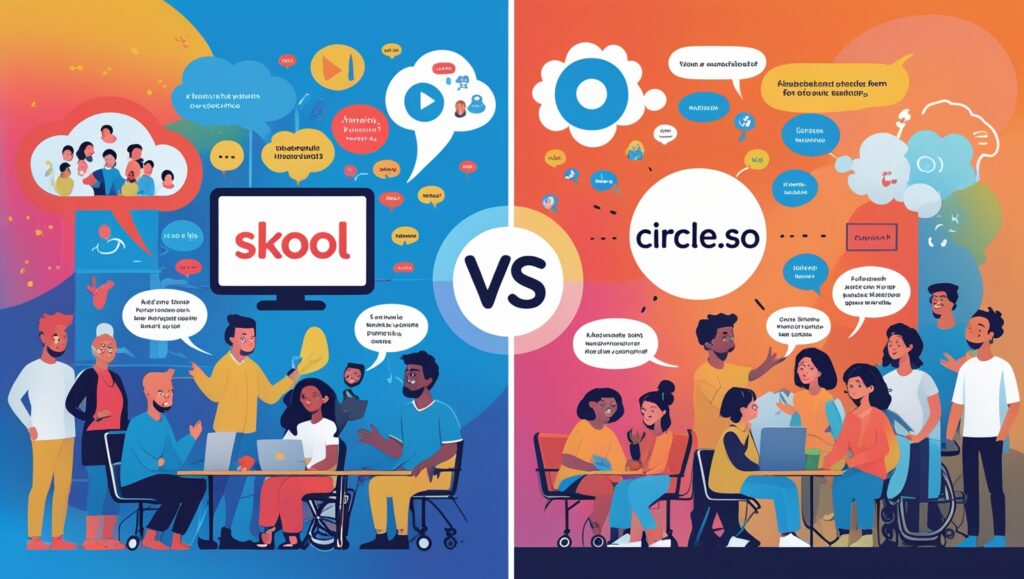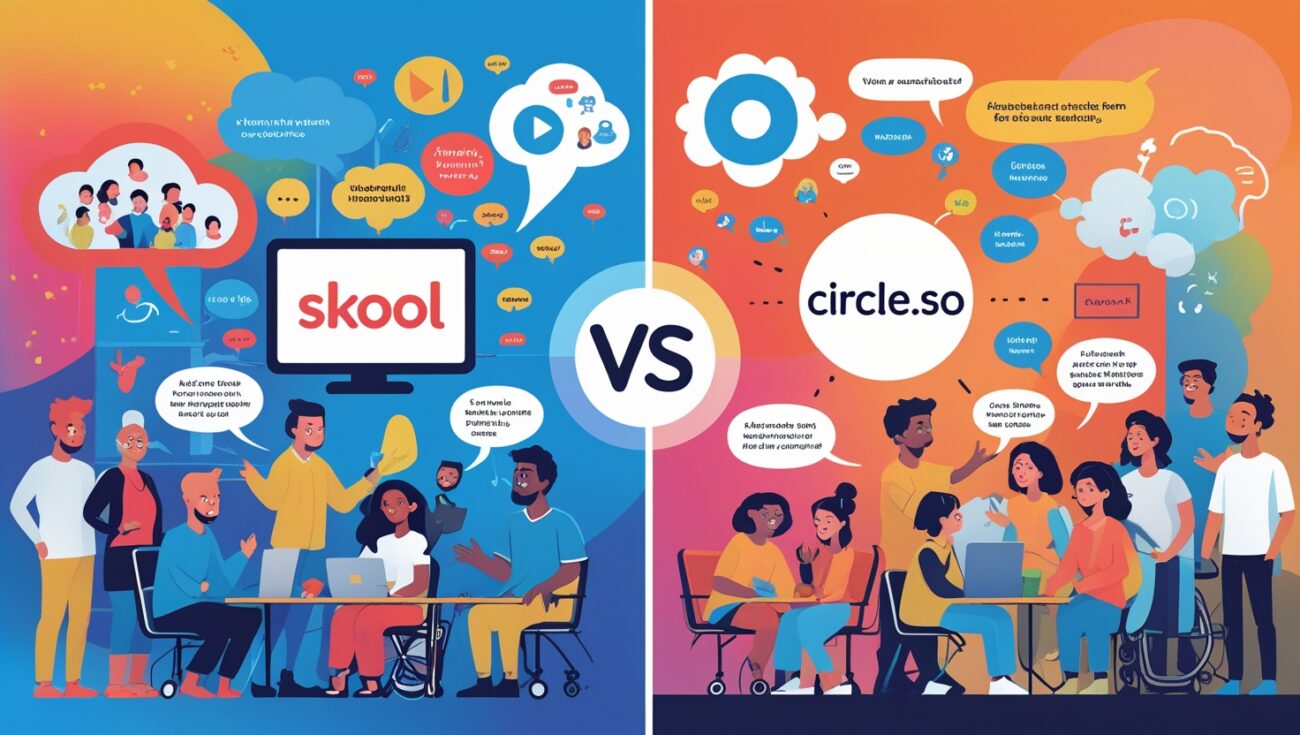Skool vs Circle.so: What’s Better for Community Engagement?
When I started building paid communities online, I knew engagement was the key to keeping members around. It didn’t matter how good the content was — if people weren’t showing up, commenting, and connecting, the community would die. So I tried a few platforms, including Circle.so and Skool, to see which one really encouraged engagement.
In this post, I’m going to break down Skool vs Circle.so from my personal experience — not just feature lists, but what actually helped me build a thriving, active community. If your goal is to increase engagement and retain paying members, this comparison will help.
Here’s the platform I ended up using — Skool — and I’ll explain exactly why.

Table of Contents
What I Liked About Circle.so
I’ll give credit where it’s due. Circle looks clean and feels very modern. The layout is customizable, and it works well if you want to create multiple spaces for different types of discussions. It also offers good integration with tools like Notion or Zapier, which can be helpful if you’re very tech-savvy.
I tried using Circle for a few weeks, and it was a decent experience. But here’s where I started to hit roadblocks: people just weren’t engaging. They’d log in, read something, and leave. There was no energy in the group, no sense of movement or excitement.
Where Skool Stands Out in Engagement
As soon as I moved my group to Skool, something changed. The layout is simpler, but it’s built around community behavior. The platform feels alive. Posts get more replies. Members stick around longer. And people start forming real connections — fast.
Skool has a built-in gamification system where members earn points for posting, replying, and helping others. There’s a public leaderboard, and it creates healthy competition. This alone boosted my group activity by more than 3X compared to Circle.
Also, Skool makes it easier to blend course content + community into one experience. Instead of bouncing between a course site and a separate forum, everything happens in one place — and that structure helps people stay engaged longer.
Click here to test Skool yourself — it’s the easiest way I’ve found to grow a real community.
Engagement Features: Skool vs Circle
Here’s what I noticed firsthand:
- Skool’s feed is more social, kind of like a cleaner Facebook Group without distractions. People are used to it and know how to use it.
- Circle feels more like a forum, which can be great for some, but less engaging for casual users who want quick interactions.
- Skool rewards activity automatically. Circle doesn’t have a built-in point system or leaderboard (unless you integrate third-party tools).
- Skool lets me post announcements, host live calls, and reply fast — all without extra apps.
For me, the biggest difference is this: Skool makes people want to come back.
Which One Should You Choose?
If you’re running a big, complex community with different member tiers and advanced workflows, Circle might work well. But if your goal is to keep people engaged, simplify your setup, and actually build a community that talks to each other — Skool wins.
I’ve had more members stick around, more daily logins, and more conversations since moving to Skool. And that’s exactly what I needed as a course creator and coach.
Try Skool through my affiliate link — if you care about engagement, this is where you should build your group.
One of the first things I noticed after switching to Skool was how quickly people started responding to each other. It wasn’t just me answering questions anymore — members were jumping in, sharing insights, and helping one another. That peer-to-peer support wasn’t something I saw much of on Circle.
I think part of the reason Skool works so well is because it feels casual yet focused. You don’t need to figure out channels or categories right away. The main feed is simple, and everything important — events, courses, discussions — is one click away.
With Circle, I felt like I had to teach my members how to use it. They’d log in, get confused about where to go, and often just bounce. The learning curve was steeper than I expected, especially for non-techy users. That drop-off killed my momentum.
Skool, on the other hand, has almost no learning curve. If someone has ever used Facebook or any basic forum, they’ll know exactly what to do. That’s key when you’re onboarding new paying members — the less friction, the better the retention rate.
Another thing I didn’t expect was how the leaderboard and badges changed the group culture. People started aiming for the top. Not in a toxic way, but in a healthy, community-driven way. It gave them a reason to show up consistently — and showing up is the foundation of engagement.
The calendar feature also helps. I host live Q&A calls weekly, and Skool sends reminders, shows who RSVP’d, and integrates with Zoom seamlessly. These events keep members involved, and the fact that it’s all inside one platform reduces friction again.
Circle can integrate with tools like Zoom and Google Calendar, but it always felt like I was stitching things together manually. And every additional step reduced the chance of members actually showing up or participating.
Inside Skool, I can pin a post, link to a course module, and tag members all in one move. That simplicity gives me more time to focus on coaching and creating value, rather than managing a platform.
I also love that Skool sends smart email notifications. If someone comments on your post or replies to your thread, you get notified. This brings people back to the platform naturally, which keeps conversations alive longer. Circle’s notifications felt less intuitive and easy to miss.
Skool’s feed is chronological and active. It shows you what’s happening right now, and encourages scrolling and clicking. Circle’s structure feels more static — better for reference, not great for real-time energy. And when it comes to community, energy matters.
As someone who runs a paid membership, I care deeply about member experience. I want people to feel welcome, supported, and motivated. Skool creates that environment without me needing to hire a community manager or build custom workflows.
If your focus is engagement, consistency, and creating a group people love to log into — I genuinely recommend Skool.
Here’s my affiliate link to start your own group — try it for yourself and you’ll feel the difference immediately.





